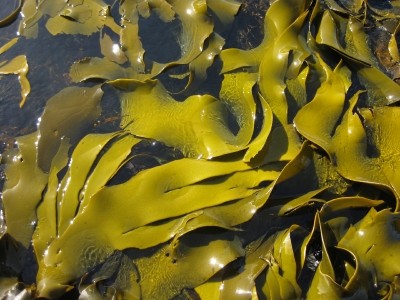Agar supply hit by seaweed shortage
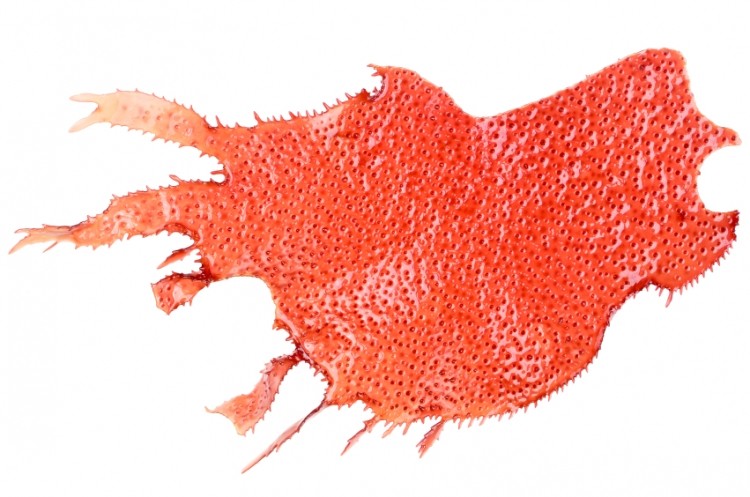
It said sales of bacteriological agar LP0011 (agar no. 1) and technical agar LP0013 (agar no. 3) have been suspended until next year to maintain supply of manufactured dehydrated culture media (DCM) to customers.
Used to prepare culture media for food testing
Mario Gualano, president, microbiology, Thermo Fisher Scientific, told us: “[They] are not used for food testing by themselves, but they may be used to prepare culture media for these applications. For food testing culture media, we have a solution in Dehydrated Culture Media or prepared media.”
In a letter sent to customers posted on Twitter, Thermo said the production and supply of agar is limited to a small number of regions and in the past 12 months there has been a global shortage.
“The key issues affecting supply are the quality and availability of the raw material (seaweed) that is used to produce agar. The yields of agar from last year’s harvest have been particularly low due to the variable quality of the seaweed,” it said.
“Seaweed quotes have also been lowered to ensure long term sustainability point of view and this too has affected the availability of raw material. At the same time, our consumption has been increasing.”
The firm said it is assessing many of its DCM products for alternative agar formulations to ensure flexibility when there are supply problems.
“Whilst in the coming month the situation will continue to be difficult, please be assured that we are working closely with our agar suppliers to secure the volumes we need for the future.”
Balance supply and demand
In a statement to FQN, Thermo Fisher said it strives to minimize the impact of downstream supply chain disruptions on customers, particularly those who rely on it to provide raw material which is reformulated and sold to other customers.
“We are currently prioritizing limited inventories of agars LP11 and LP13, due to evolving market conditions and are confident that we can address this temporary supply issue.
“These efforts are necessary to ensure production of our own products while we seek alternatives and identify other global sources of seaweed. We expect the supply issue to be resolved in early 2016.”
Bacteriological agar can only be made from species of Gelidium because the resulting agar has a low gelling temperature (34-36 degrees Celsius) that allows addition of other materials to the agar with a minimum risk of heat damage, said MoorAgar, a producer and distributer of agar and related products throughout North America.
“Bacterial agars must not contain anything that might inhibit the growth of bacteria, such as trace metals, soluble carbohydrates or proteins, and they shouldn’t contain any bacterial spores. They must not interact with any materials a researcher may add as nutrients for the bacteria being studied,” according to the firm’s website.
A US-based food microbiologist told us agar is used in microbiological media to convert it from a liquid to a solid for plating. Wherever petri dishes are used, agar is used (with some minor exception).
“Media can be purchased with or without added agar (typically at 1.5% or 15g per litre). Often my laboratory purchases bulk agar separately and we add it ourselves. In some cases you might want to control the amount of agar you add.
“This could impact our research if there was a complex media that we were not able to acquire due to the shortage. As I indicated earlier we were not aware of any issues and so far our stocks are good.”
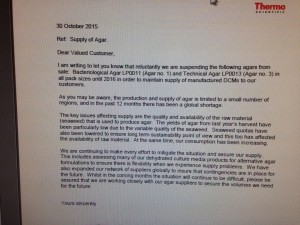
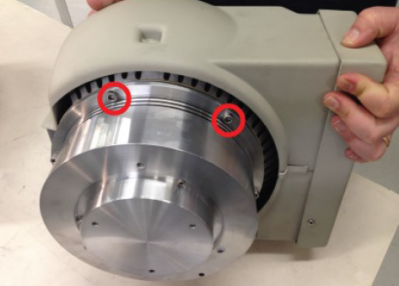
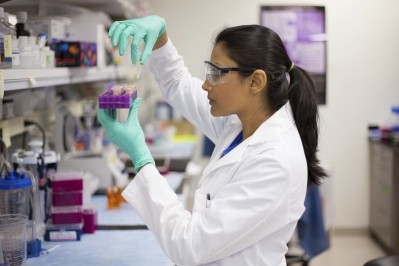
![Seaweed & Co: “[DNA testing] will help differentiate material from cheap, nasty stuff coming onto the market with no testing whatsoever,.”](/var/wrbm_gb_food_pharma/storage/images/_aliases/wrbm_medium/1/3/9/7/3407931-3-eng-GB/DNA-seaweed-authentication-test-launched-in-UK.jpg)
